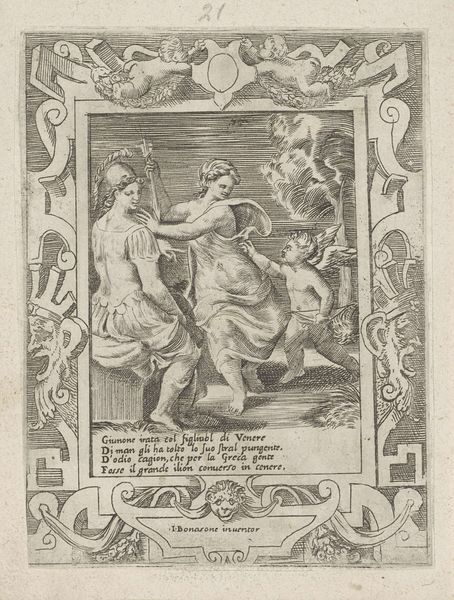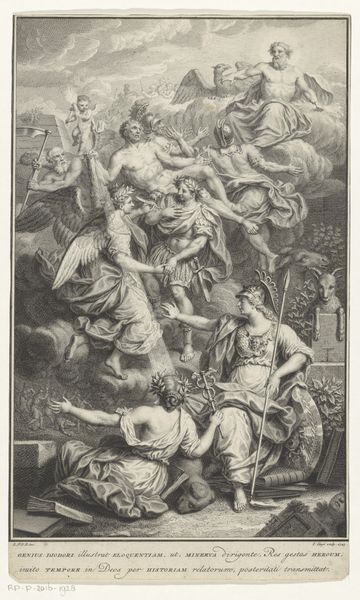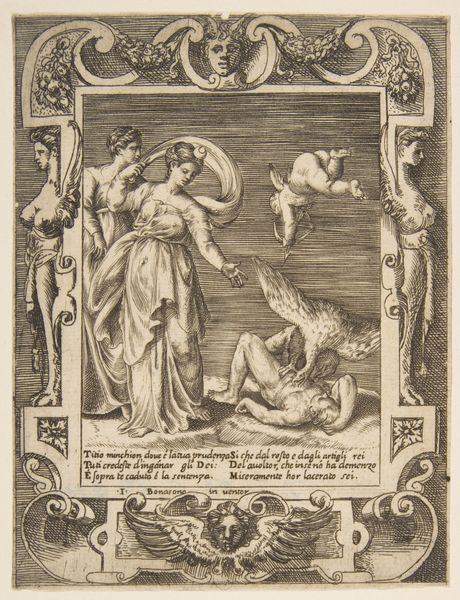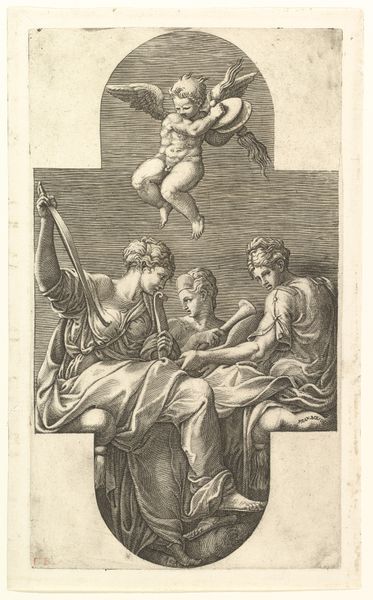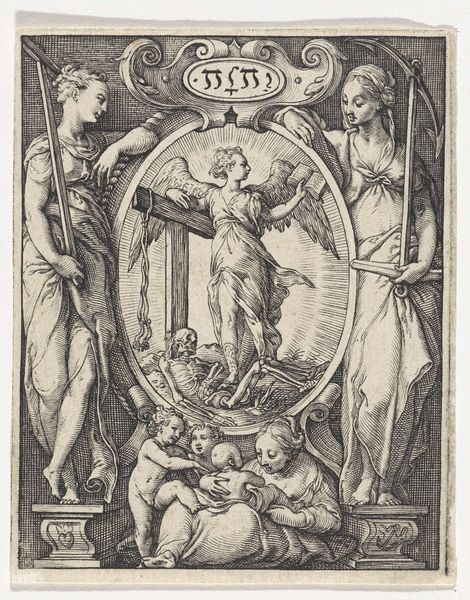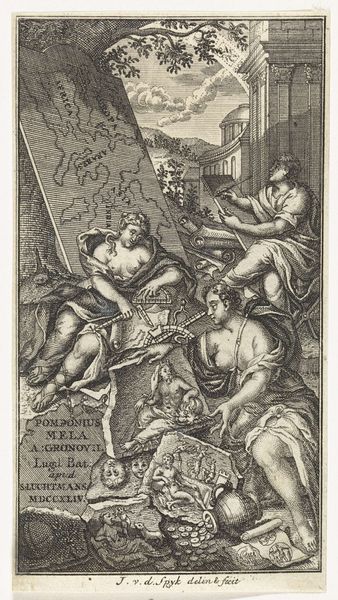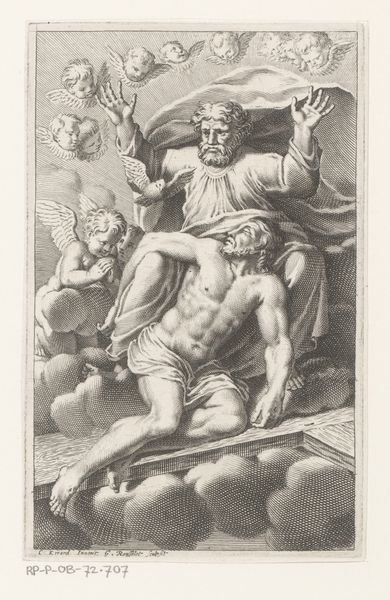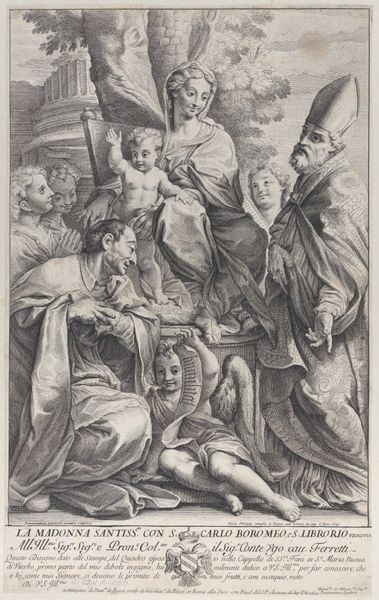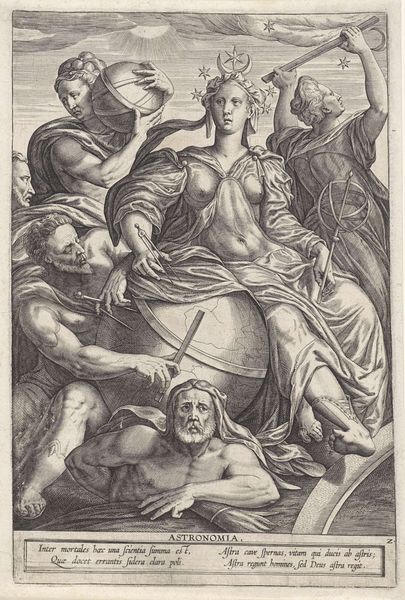
print, engraving
#
allegory
#
baroque
# print
#
old engraving style
#
history-painting
#
engraving
Dimensions: height 147 mm, width 100 mm, height 183 mm, width 135 mm
Copyright: Rijks Museum: Open Domain
Curator: Jacob Houbraken created this engraving titled "Verbeelding temt Vader Tijd," which translates to "Imagination Tames Father Time," in 1729. You can currently find it here at the Rijksmuseum. What are your first thoughts? Editor: Immediately, I'm struck by the clear power dynamic, visualized through allegory. The youthful female figure wrestling with the weary, old Father Time really embodies a Baroque spirit of the triumph of artistry. Curator: Yes, the central allegory is compelling. It was produced as a frontispiece to Johan van Gool's "Nieuwe Schouburg," a book detailing the lives of Dutch and Flemish painters. The image promotes the idea that art and creativity can transcend the ravages of time. Notice the frame adorned with scenes referencing the world of artists and the classical motifs? Editor: That intricate border adds another layer to it. You can see little vignettes of artists at work! This visual connection to art history situates the print within a longer lineage of artistic production and frames the idea of a Dutch art historical canon. Also, the inclusion of portraits near the putti really does it for me; who are they, by the way? Curator: The portraits, sadly, are not conclusively identifiable, but scholars suggest these could represent prominent artists whose biographies were included in Van Gool’s publication. Their presence emphasizes the biographical aspect of the book that the engraving introduces. I see that you feel it. Editor: I do. And the allegory presents an interesting tension. Time, often depicted as destructive, is being subdued by imagination. However, who benefits, and is this accessible for anyone? That's what always comes to mind first with artwork produced during the Baroque. Curator: Those questions are necessary and speak directly to the historical context. How are societal and cultural powers depicted in the images in this collection, and in which positions are each represented? Do the images promote social transformation? Editor: It's that crucial understanding of history—what ideologies are these artworks perpetuating or challenging, even if unintentionally? It forces us to critically analyze what "triumph" really means within its social fabric. It also prompts essential discussions about whose stories get told and remembered in art history. Curator: Ultimately, reflecting on these works expands our awareness and enables nuanced conversations, especially in public institutions.
Comments
No comments
Be the first to comment and join the conversation on the ultimate creative platform.


